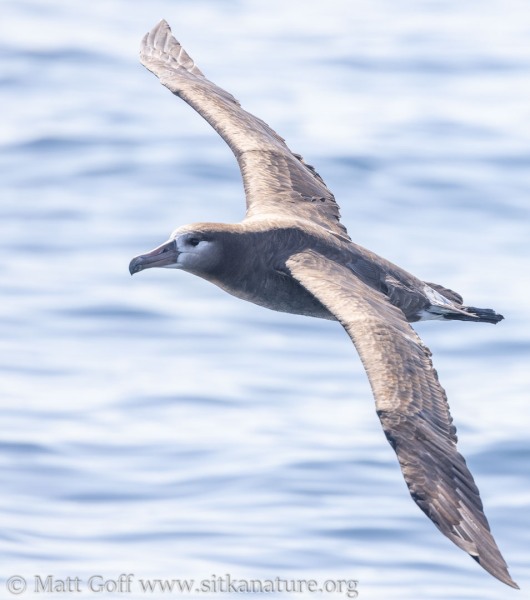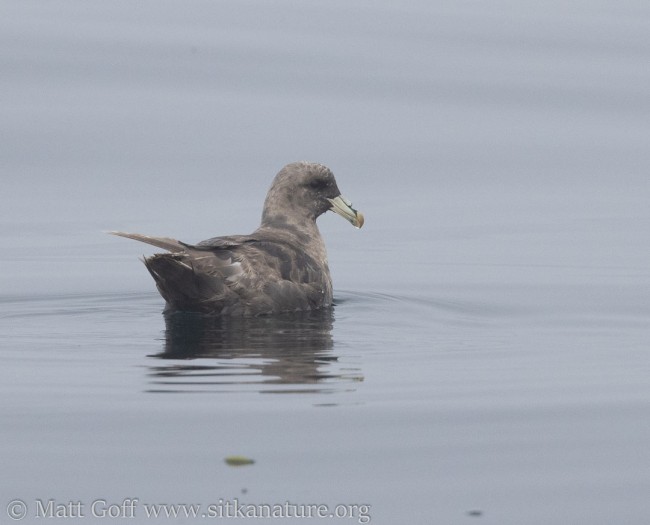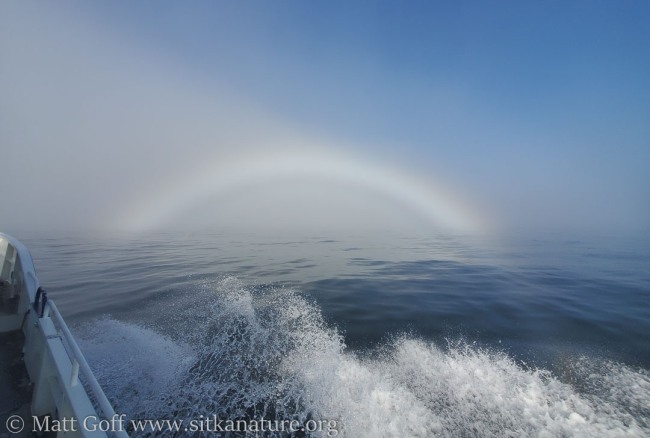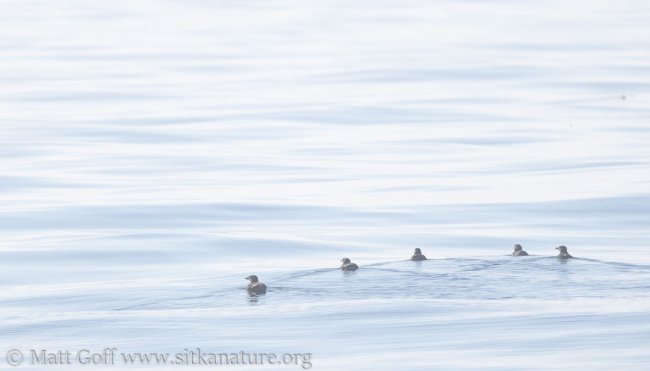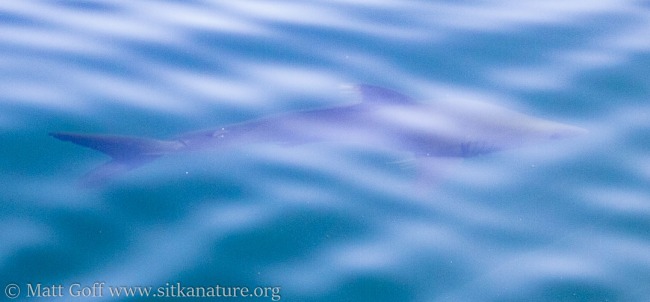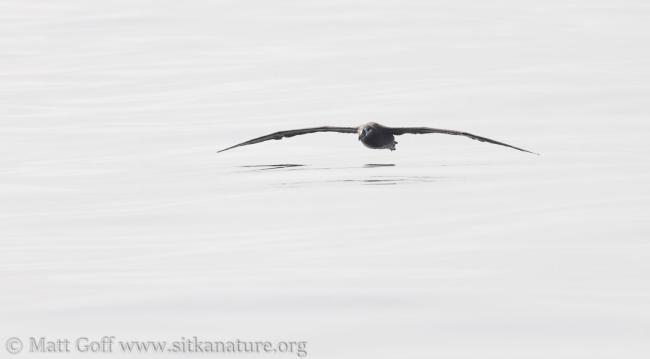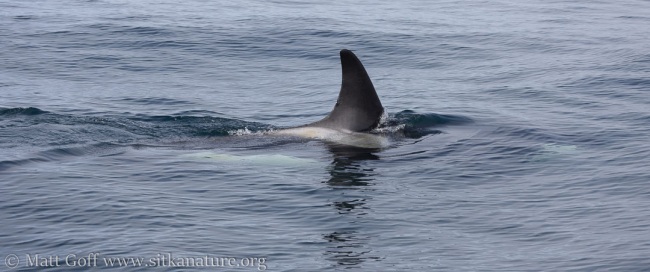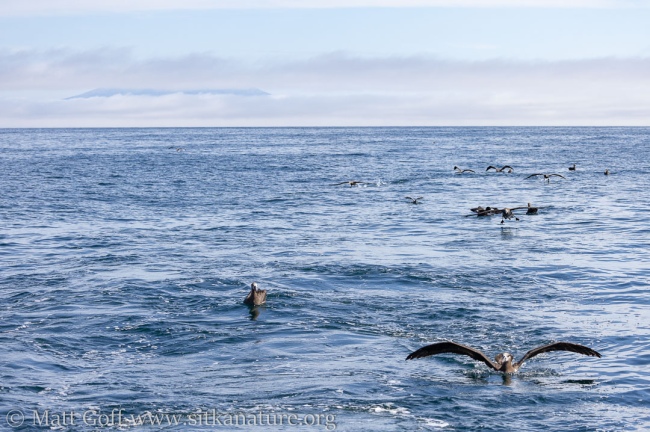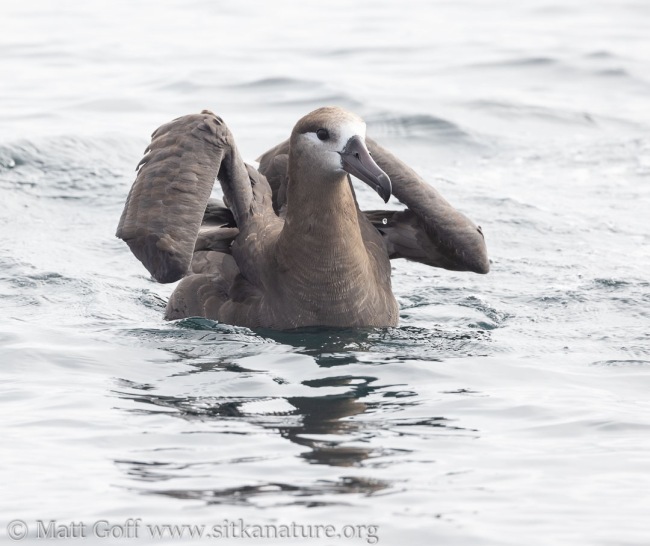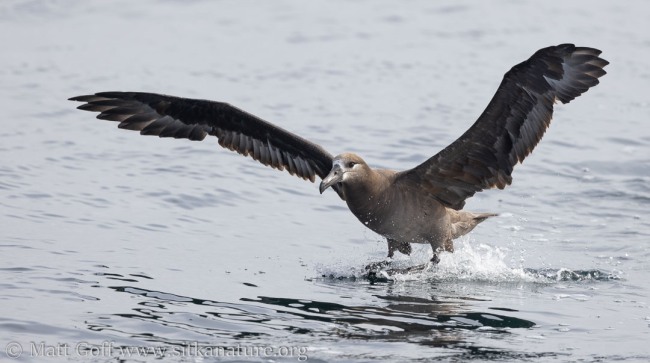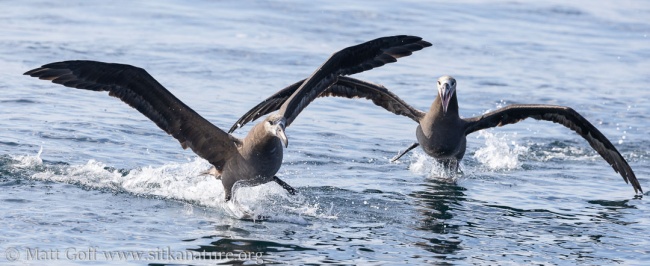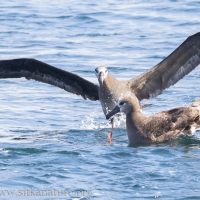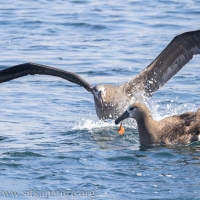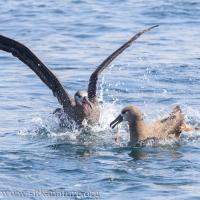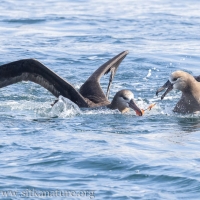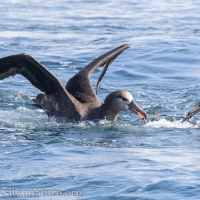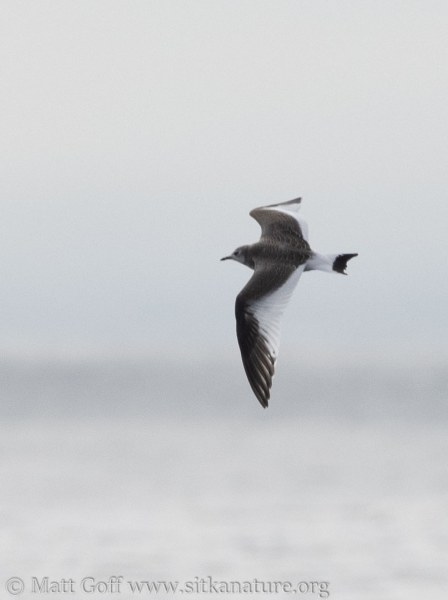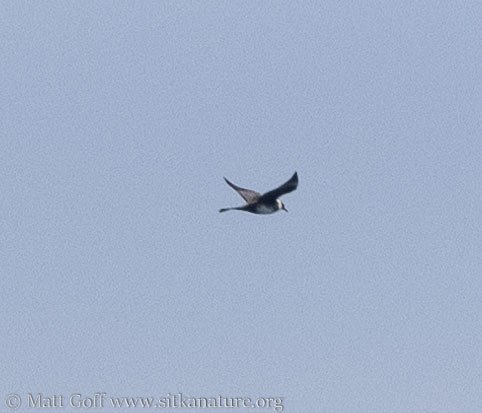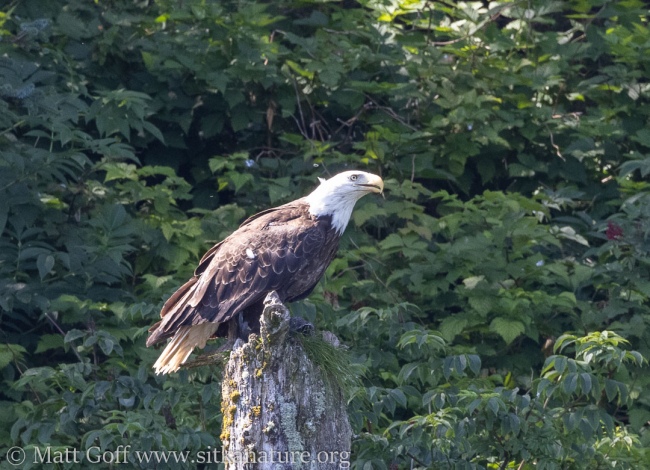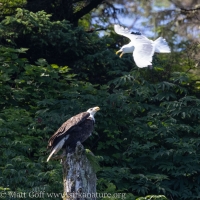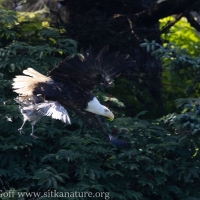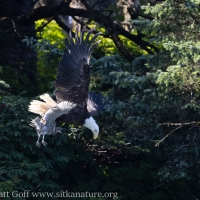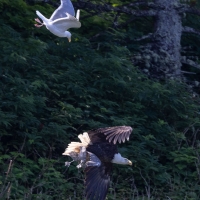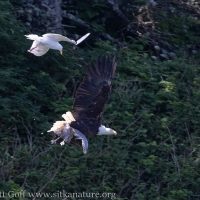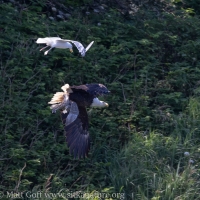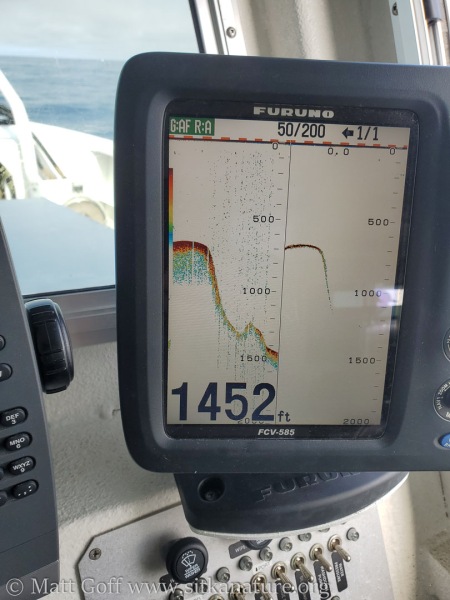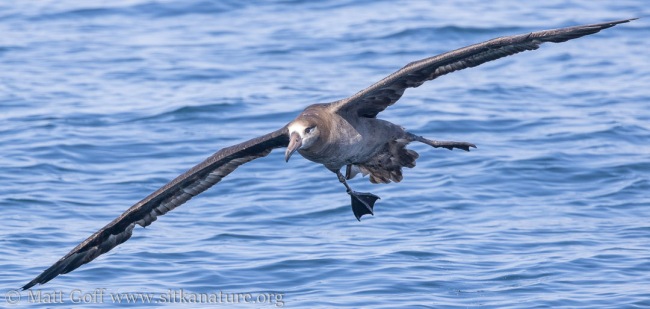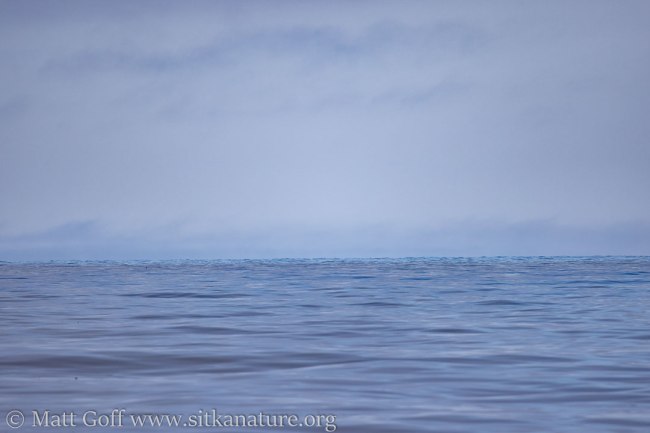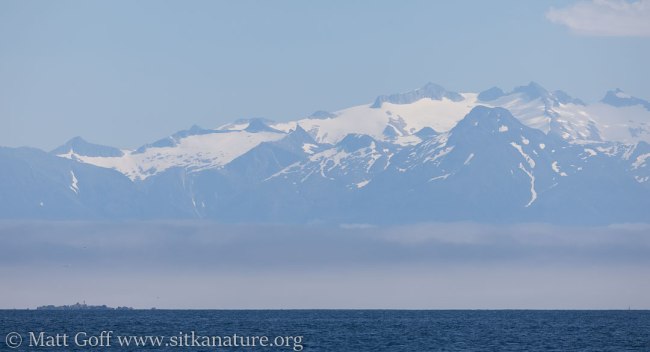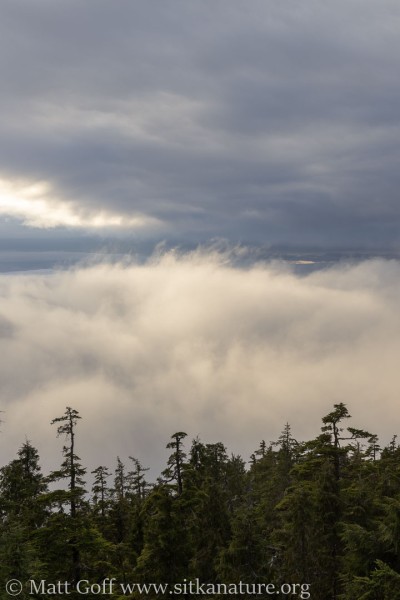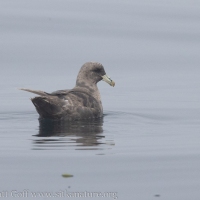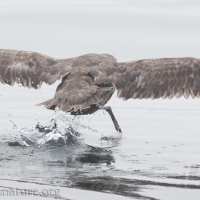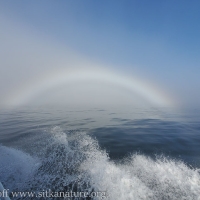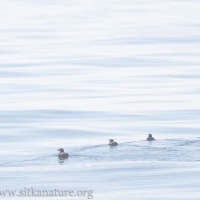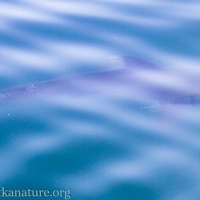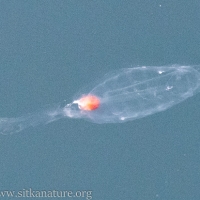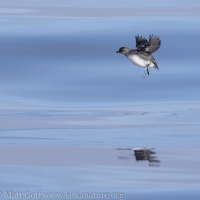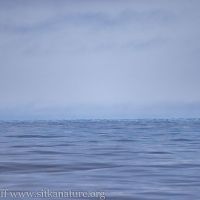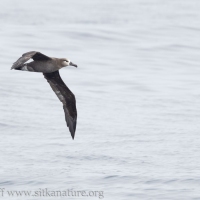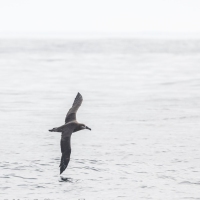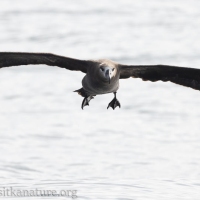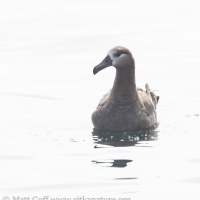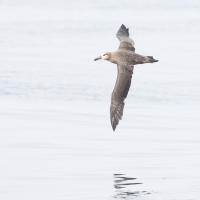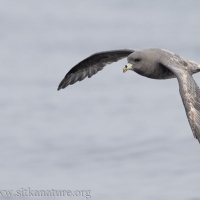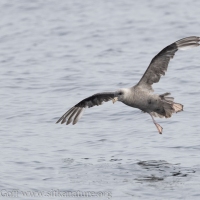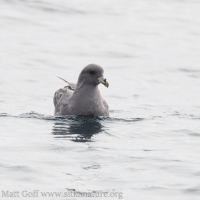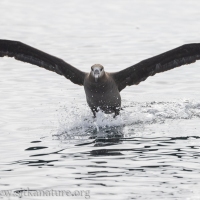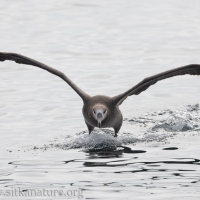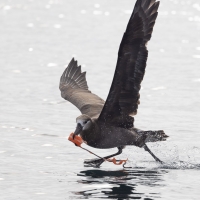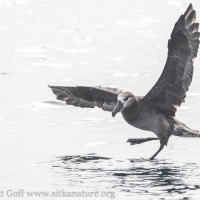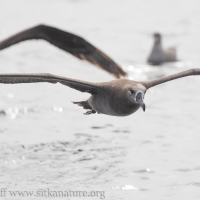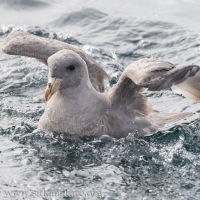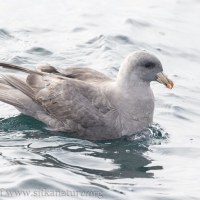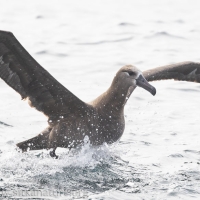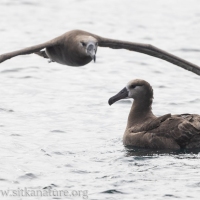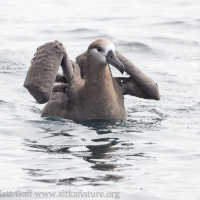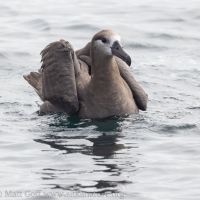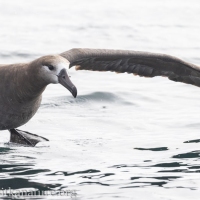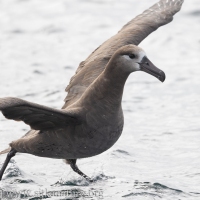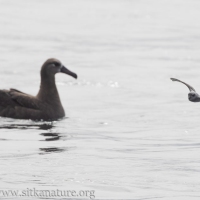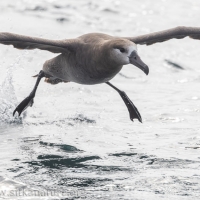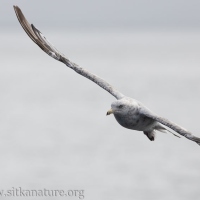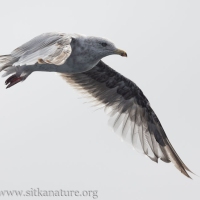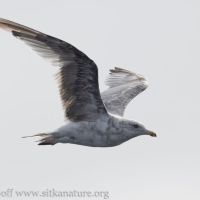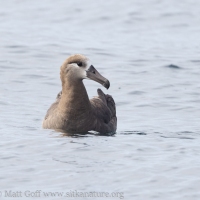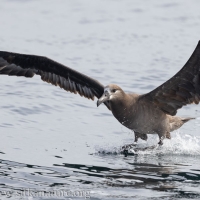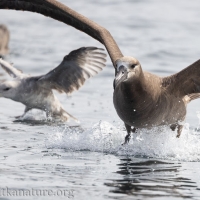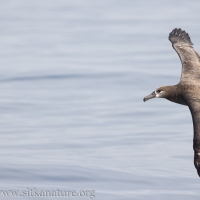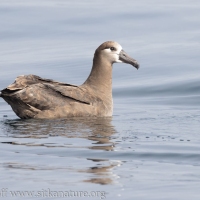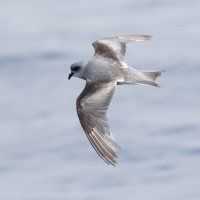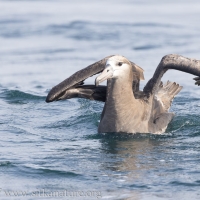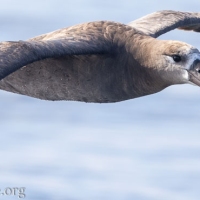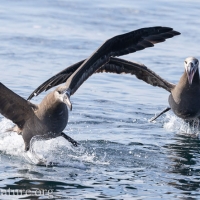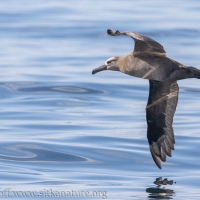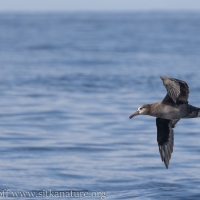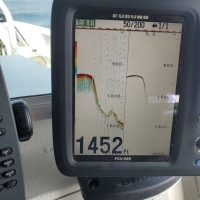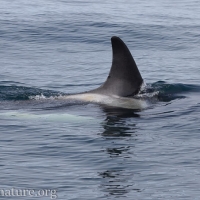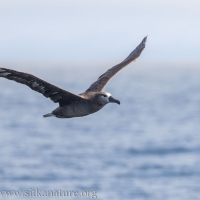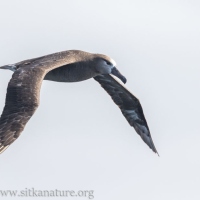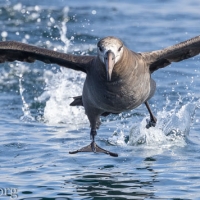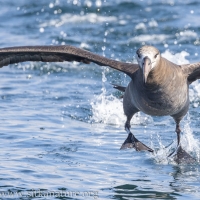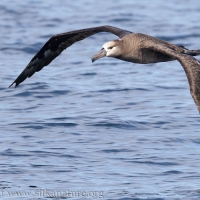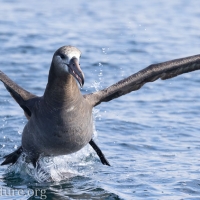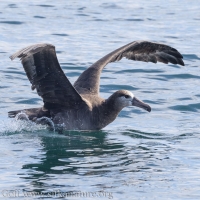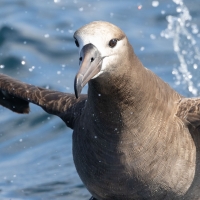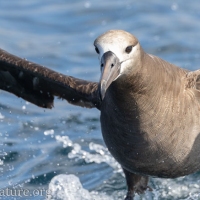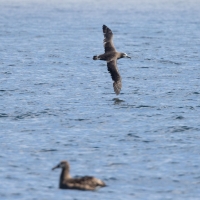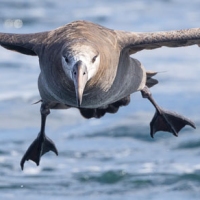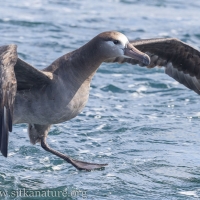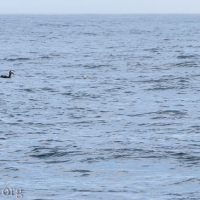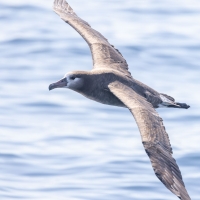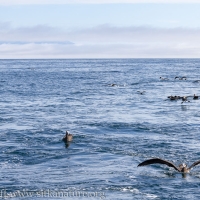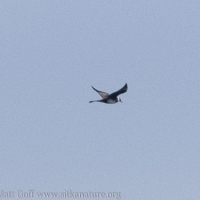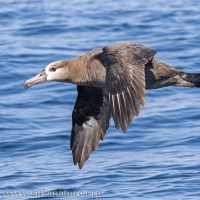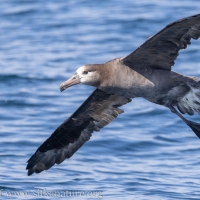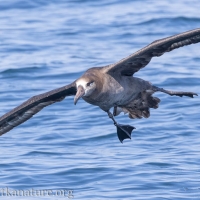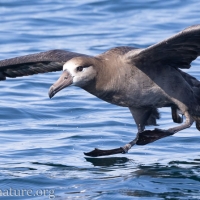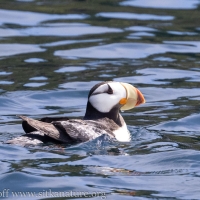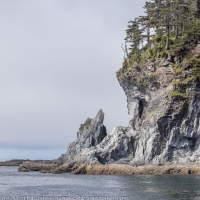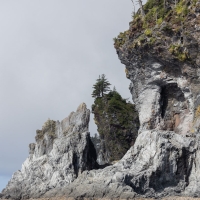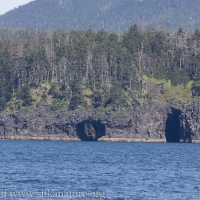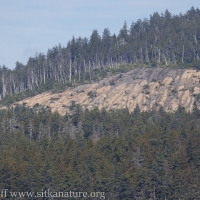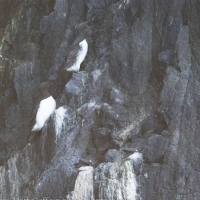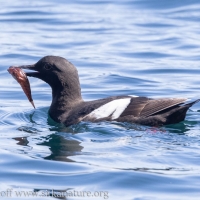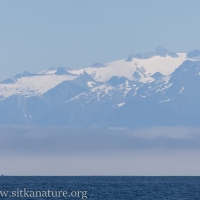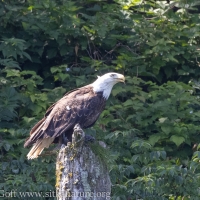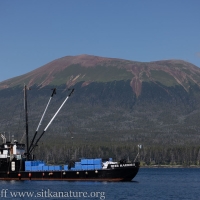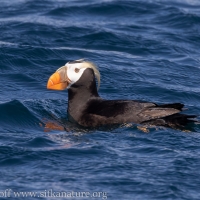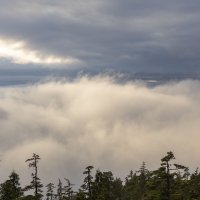Today was sunny and warm, but cooler than past couple of days. Perhaps this was due in part to the off and on marine layer.
I was up early (for me) to get down to the harbor for a planned pelagic trip with A Whale’s Song Expeditions. The sun was shining over town, but I could see a dense marine layer over the waters of the sound.
We departed shortly after 7am and it did not take long for us to get out into the fog. It was a little strange being underway with so little visibility. Chart plotters and radar make this much less dangerous than it might have been in the past, but it is still disorienting.
By the time we neared Cape Edgecumbe, the fog had thinned a bit. We passed through thicker and thinner patches of fog as we continued out towards the shelf.
It was difficult to see well while we were in the marine layer fog, but a Northern Fulmar (#142) on the water was our first clearly pelagic bird.
The marine layer thinned enough for us to see blue sky above, and we were treated to a rather bright fog bow before we made it into clear are. Although we could see the sky above with sun shining down, we had limited or no sight of land.
Continuing on, I noticed Rhinoceros Auklets mostly, but also some Cassin’s Auklets (#143).
Connor had done a little online research in preparation for this trip and learned that an often effective way of drawing in pelagic birds is to put fish scraps in an onion (mesh) bag, and drape it over the side so it hangs just a bit into the water.
When we first slowed down to put the bag in the water we saw a shark swim by, so we waited a bit before deploying the bag.
Further distant we saw something that we thought was a whale at the time. In hindsight, I wonder if it might have been another shark, as it didn’t really act like most whales I’m used to seeing. In the end, it will remain a mystery.
It didn’t take long motoring slowly with onion bag of fish parts in the water for the first Black-footed Albatross (#144) to show up. Gradually more joined, up to 13 during this first round.
We saw Killer Whales in the distance (offshore type?) and opted to pull up the bag and go fast for a better look. We never really seemed to get any closer to them, and then lost sight. Shortly after we stopped to start motoring slowly, we had three Killer Whales pass by right in front of the boat. A couple minutes later two came porpoising by with long stretches underwater (including swimming under our boat). They were heading in the direction the first three were going, so I wondered if they may have been swimming fast to catch up.
As we motored keeping the wind at the starboard side, it did not take long to attract more albatross. They mostly seemed to fly up from downwind, sometimes circling around the boat, but for landing on the water behind. I counted 17 all trailing behind the boat at once before deciding to watch from the bow for a while (in case something showed up). Based on what others said, there may have had up to about 20 at one time.
It was interesting to see some behaviors of the Black-footed Albatross. They seem to have an extra joint in their wings relative to other birds, and they fold up differently.
They would regularly water ski as they were coming in and sometimes appeared to be walking on the water as well. I was a little surprised at their voice, it was higher pitched than I would have guessed for such a large bird.
The Black-footed Albatross were not shy about coming near the boat, nor about going after food that another had already laid claim to.
Along with the albatross, there were regularly a a couple fulmars at a time, plus scattered Fork-tailed Storm-petrels (#145). A Sabine’s Gull (#146) also made a brief flyby.
Connor saw a distant bird flying by and was able to tell from his photos that it was a jaeger. I managed to get some photos, and they were sufficient to identify it as a Pomarine Jaeger (#147), the third and final new species for my Alaska list on the trip.
Somewhat surprisingly we saw no shearwaters during the trip.
On the way back, we stopped near Cape Edgecumbe to look for a Horned Puffin. While there, Connor spotted a Peregrine Falcon which we were all able to see (#148).
We stopped by St. Lazaria and saw a bit of interspecies drama when a Bald Eagle grabbed a young gull. I’m not entirely sure, but it definitely seemed to me the gulls riled up well before eagle arrived. The Eagle came back from the gull colony with a chick in its talons and gulls mobbing it. The gulls continued to mob it when it perched briefly in a snag, then followed it for a bit more as it flew higher up on the island.
Looking at the GPS track when I got home, I was a little surprised to see where we had ended up going. I was almost tempted to think the map was wrong, but I’m sure it wasn’t. We had intended to go due west from Cape Edgecumbe to the edge of the shelf where it comes closest to land 8 miles out. We actually went Southwest and ended up about 20 miles due west of Biorka Island.
We still made the shelf edge, just not quite where we had intended to.
Reviewing my photos, I noticed one of the Black-footed Albatross had an aluminum band. Had I seen it at the time, I would have tried for more photos, though it’s unlikely I would have been able to get good enough pictures to read the number.
My disorientation was due significantly to the marine layer which mostly obscured the land. When we could see Mount Edgecumbe, that didn’t really help me reorient since I’m not familiar enough with its profile on this side.
While we were out on the boat, the marine layer pushed in over town. It was breaking up by the time we got back.
A bit thanks to Neil McDermott (A Whale’s Song Expeditions owner and captain) for being generous with his boat and time, and getting us out there to see the birds!
On the land again, I had the feeling I was still on the boat. I took a nap at home which helped alleviate that symptom.
All in, I took over 900 photos. I’ll certainly edit those down significantly over time. [By the time I’m publishing this in January 2022, I worked things down to a bit over 300. I’m including 100 with this post, though may add and/or remove some later if I get around to reviewing further]
This evening I got my radio show ready for tomorrow. Afterwards I drove up Harbor Mountain in case there might be a bit of a sunset. Not really any sunset to speak of, but I did enjoy some of the lighting I got to see when I drove up above a clouds skirting the mountain and found myself in a gap between cloud layers.

